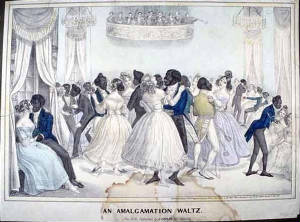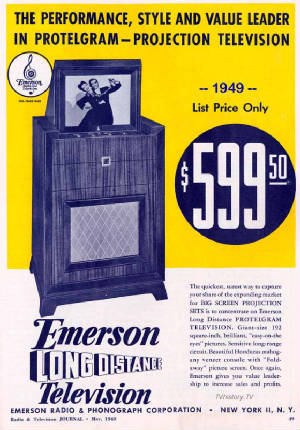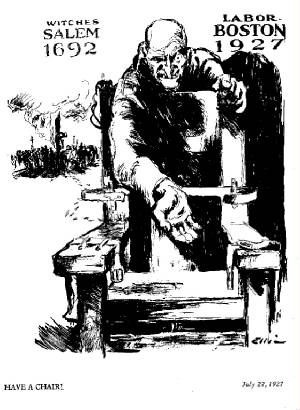|

|
| Amalgamation Waltz |
2. Propaganda Analysis
Rationale: Students are constantly bombarded with propaganda. What better place than the history classroom
to introduce them to the EIGHT techniques of propaganda? History affords us the
opportunity of letting them see propaganda in practice!
Eight Types of Propaganda: This website was inspired by the ground-breaking Institute for Propaganda Analysis, created in 1937. Click on
the various links under the headline "Common Techniques".
Online Sources:
Civil War Propaganda
University of the Poor. “Amalgamation
Waltz” (see above image)
Harper’s Weekly, “American Political Prints 1776-1876” - All of the Civil War propaganda cartoons listed below came from the Harpweek.com website. To access the original
cartoon, click the link above, then click on "Browse". Choose the year that the cartoon was produced, and click on the
link that says "See a Full Text List of These Prints".
"Union and Liberty and Union and Slavery," 1864
"Columbia Demands Her Children", 1864
"Congressional Surgery", 1860
"Confederate Anthem", 1862
"Flag of Our Union", 1851
"Columbia's Noblest Sons", 1865
"God and Our Union" 1860
"The Southern Confederacy a Fact" 1861
"Freedom's Immortal Triumph" 1865
World War One Propaganda
"Beat Back the Hun"
"Sugar Sinks Ships"
World War 2 Propaganda
Rosie the Riveter (Rockwell's original)
We Can Do It (Rosie the Riveter)
Private Joe Louis
United We Win
Don’t Let That Shadow Touch Them
Hitler Carpool
“Waiting for a Signal from Home”
“Weapons for Liberty”
“Strong in the Strength of the Lord”
Cold War Propaganda
Another lesson of propaganda during the Cold War.
Additional Resources
The Civil War Music Store. “Civil
War Songs”
Civil War Music - Authentic History - contains music as well as speeches and other reenacted sounds of the civil war
World War Two Music - Authentic History – contains an amazing collection of WWII songs including “You’re a Sap, Mr. Jap” by the Andrews Sisters!! Great source for your WWII music! Soon, Authentic History will have Homefront
as well as other WWII music.

3. You be the Judge
Rationale: An easy way to allow students to put themselves inside history is to let them judge
history, using the rules of the day. It is important NOT to allow students
to judge history using their OWN values, but rather, using the values of the time period. It’s fine to let them determine
whether they would have allowed something to happen in today’s world – after all, we do want them to learn from
their mistakes; however, they must understand that it’s not fair to judge history by today’s standards.
Sources / Case
Summaries:
About Agnoticism/Atheism,
“Supreme Court Decisions on Religious Liberty”

|
| "Young America Rising at the Ballot-Box and Strangling the Serpents Disunion and Secession" |
4. Teaching Relative Significance
Note: This topic is also discussed in the Alternative Assessments section of the
workbook and this website.
Rationale: A very
important skill, but one that is difficult to teach, is the skill of determining relative significance. While it is difficult to teach, you will find that few activities engage the class as much as this one. Students love to argue and discuss and this activity
will certainly allow them the leeway to do this.
The question often
rises during wars: Which cause was the most significant? This is a question of relative significance. Students must
weigh evidence and decide, based on the significance of other causes, which were most important. This requires them to balance their opinion using ALL THE EVIDENCE.
This is why it is an outstanding strategy – it allows the teacher to assess a wide range of knowledge, and it
is intrinsically interesting to students.
Possible Topics for a discussion
of relative importance:
a.
Which failures of the Articles of Confederation leading to the Constitution were most significant?
b. What was the most significant
cause of the Civil War?
d. What aspect of the 1920s
was most responsible for its image as ROARING?
e. What was the most significant
information used by President Truman when he made the decision to drop the atomic bomb in 1945?

|
| TV Ad for the 1940s |

|
| (Click to go to larger version of image) |
The strategy outlined in the workbook combines ideas from “Reader’s Theater” with
a more active student response in the form of a trial.
For further sources on Sacco and Vanzetti go to:
2. Authentic History link to a speech by Michael J. Musmano, Member of Defense Team in Sacco & Vanzetti Trial Reflects on The Trial, 1957.
|

